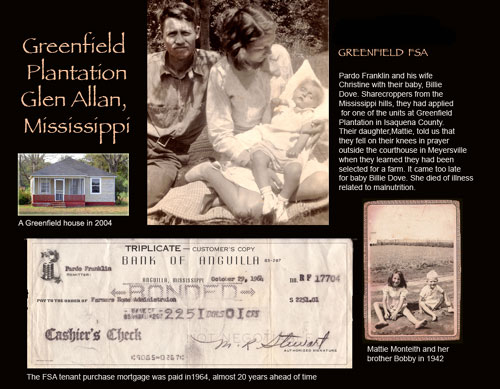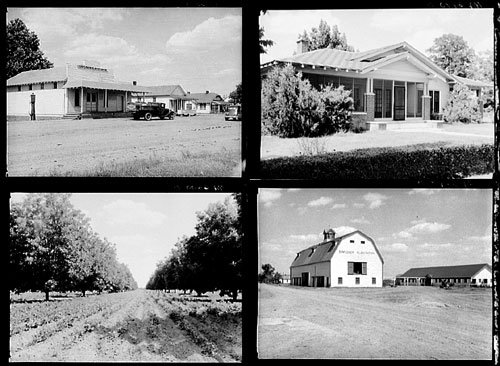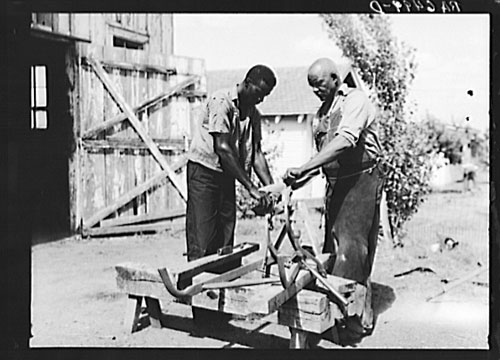| home | pg. 1 | pg. 2 | pg. 3 | pg. 4 | pg. 5 | pg. 6 | pg. 7 | pg. 8 | pg. 9 | pg. 10 | pg. 11 | Map of FSA Projects | Map of Transylvania | notes | Transylvania detail 1 | Transylvania detail 2 | Wolcott detail | Bibliography | D. Gorton Homepage | Jane Adams Homepage
|
|
by
Jane Adams
D. Gorton
Paper given at the Joint Meetings of the Agriculture, Food and Human Values Society and the Association for the Study of Food and Society, Boston University, June 7-11, 2006
|
Curiously, it had not occurred to us to inquire about what happened to the people who were living on the plantations before the FSA acquired them. Greenfield, on the Washington-Issaquena County line in Mississippi, had been abandoned, grown up in Johnson grass, we were told by some of the first settlers. Dyess and Jerome were basically new ground, left open after timbering. But others had been working plantations. We began looking more closely at the FSA photographs for evidence. |
 |
| In 1936, Carl Mydans had shot a few frames (9 captioned, 6 untitled) at Sunflower Plantation, “just optioned by Resettlement Administration.” He shot the plantation headquarters, manager’s house, mule shed, gin and seed house, pecan grove, a barn, and the blacksmith shop. The plantation looks virtually depopulated, though neat and well-kept. |  Captions: Plantation headquarters, Sunflower plantation, just optioned by Resettlement Administration. Near Sunflower, Mississippi. LC-USF34-006508-D Manager's home at Sunflower Plantation now under option by Resettlement Administration. Near Sunflower, Mississippi. This is one of the largest plantations in the region. Pecan grove with soybeans. Sunflower plantation, just optioned by Resettlement Administration. Near Sunflower, Mississippi. Gin and seed house (to right) on Sunflower plantation now under option by Resettlement Administration. All by Carl Mydens, June 1936. |
|
Except the blacksmith shop. Everyone there is black. If Sunflower were a typical plantation, it would have had wage hands, sharecroppers, and perhaps share or cash tenants.[8] Given the photographic evidence, including Mydans’ and Marion Post Wolcott’s photographs of plantations in the immediate area showing black workers in the fields, and the demographics of Sunflower and the surrounding counties, in which some 80 percent of farmers were “colored”, one would expect that the overwhelming majority of residents on the plantation were black. |
 "Double shovel" cultivator being repaired at Sunflower plantation. Near Sunflower, Mississippi.. Carl Mydans, June 1936 LC-USF34- 006499-D |
|
home | pg. 1 | pg. 2 | pg. 3 | pg. 4 | pg. 5 | pg. 6 | pg. 7 | pg. 8 | pg. 9 | pg. 10 | pg. 11 | notes | Map of FSA Projects | Transylvania detail 1 | Transylvania detail 2 | Wolcott detail | Bibliography |
|